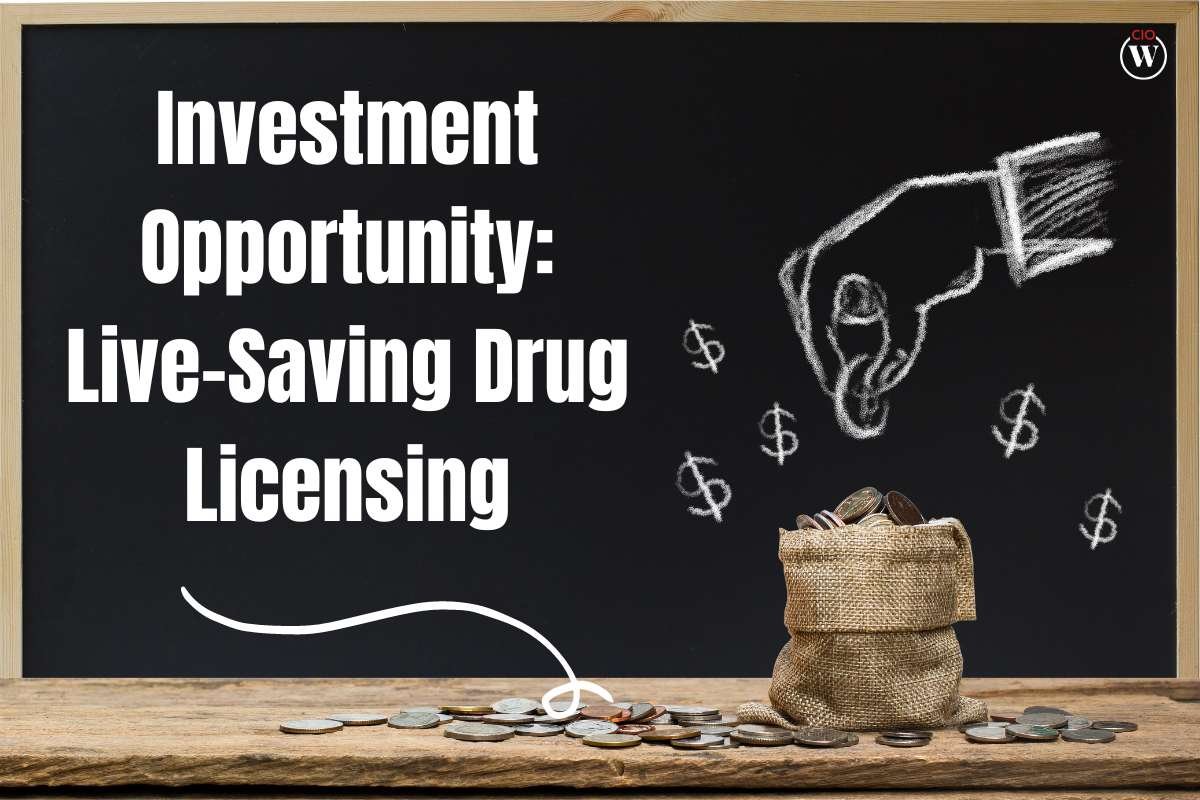Profitable and seeing rapid expansion in recent years, the pharmaceutical business is a sector that has a bright future ahead of it. It is anticipated that by the year 2023, the total value of the worldwide market would exceed $1.5 trillion. While there is a great deal of regulation and fierce competition in the business, investors may take advantage of a wide variety of investment options.
One of these opportunities is investing in the licensing of potentially life-saving drugs. In this paper, we will examine the investment opportunity given by life-saving drug licensing, including the advantages, dangers, and concerns for investors. Specifically, we will focus on the potential for profit, the potential for loss, and the potential for both.
What is life-saving drug licensing?
The process of getting legal authorization to produce and distribute life-saving medications is referred to as the life-saving drug licensing pharmaceuticals. Cancer, cardiovascular disease, and viral disorders are only some of the ailments that may be treated with these pharmaceuticals, which are considered to be critical or life-threatening conditions.
It is possible for pharmaceutical firms to produce and market these treatments by using existing technology and research thanks to licensing agreements, which eliminates the need for major investments in research and development.
Benefits of life-saving drug licensing;

1. High Demand
Due to the crucial and life-saving nature of these pharmaceuticals, there is a significant demand for these medications. The pharmaceutical industry thus benefits from a reliable and continuous source of income as a result of this.
2. Established Market
The market for pharmaceuticals that can save lives is well established, and there are regulatory systems in place that have been developed. This indicates that purchasing a license is an investment opportunity with a low level of risk.
3. Reduced R&D Costs
Life-saving drug licensing gives pharmaceutical businesses the opportunity to profit from previously conducted research and technology, which in turn reduces the need for costly research and development expenses.
4. Diversification
Investors, especially those with current portfolios in the pharmaceutical business, may find that investing in the licensing of life-saving drugs presents a chance for diversification via the use of other asset classes.
5. Strong Return on Investment
A large return on investment may be possible for investors thanks to the minimal risk of licensing requirements in comparison to the great demand for treatments that may save people’s lives.
Risks of life-saving drug licensing;
1. Regulatory Risks
The regulatory environment around pharmaceuticals that are capable of saving lives may be both complicated and rigorous. This may cause the licensing procedure to be delayed or even rejected, which will have an effect on income sources.
2. Competition
Because of the intense competition in the pharmaceutical sector, licensing potentially life-saving medications might bring in a large number of new rivals, which can have an effect on market share and the possibility of income.
3. Pricing Pressures

Pharmaceutical businesses are feeling the need to price their wares in a manner that is more competitive. This may have an effect on the various sources of income, as well as diminish the return on investment for the investors.
4. Manufacturing Risks
The production of medicines that may save lives can be a difficult and time-consuming process that calls for specialized equipment and personnel. Any flaws with the manufacturing process might result in production delays or quality control concerns, both of which can have an effect on revenue streams.
Considerations for Investors;
1. Market Research
Investors in a potentially life-saving medicine should first perform exhaustive market research to get a comprehensive understanding of the competitive environment, regulatory requirements, and demand for the treatment in question.
2. Financial Analysis
Investors need to do a financial study to evaluate the prospective return on investment, which should include an assessment of the potential income, the costs of licensing, and the expenditures of production.
3. Due Diligence
Due diligence should be performed on the pharmaceutical firm by potential investors before making an investment in that business. This should contain an assessment of the company’s previous achievements in terms of its financial performance, management team, and standing in the industry.
4. Risk Management
In order to reduce the potential negative outcomes linked with the approval of life-saving medications, investors should have a risk management plan in place. This may entail investing in several licensing prospects or diversifying their business in some other way.
Case Study: Gilead Sciences
Gilead Sciences is a pharmaceutical business that has successfully capitalized on life-saving drug licensing in order to create major income streams. The licensing of antiviral medications, such as those used to treat HIV and hepatitis C, is the cornerstone of the company’s success.
Gilead Sciences has received approval to market a number of antiviral medications, such as Sovaldi and Harvoni, which are used in the treatment of hepatitis C. The sales of these medications reached a staggering 20 billion dollars in the year 2015, resulting in huge income for the corporation.

In addition to purchasing licenses for already existing medications, Gilead Sciences has made significant investments in the research and development of novel medications.
Nonetheless, the corporation has been criticized for charging excessively high rates for its medications, especially in the United States. Because of this, the public as well as political figures are putting pressure on the corporation to cut its costs.
Gilead Sciences is still a thriving pharmaceutical firm despite the pressure that has been put on pricing, and the company has a great track record of licensing and producing products that save lives.
Bottom line
Investors who are wanting to diversify their portfolio or acquire exposure to the pharmaceutical business might find a one-of-a-kind investment opportunity in the licensing of life-saving pharmaceuticals. Despite the fact that this investment opportunity is not without its dangers, pharmaceutical businesses may anticipate a consistent flow of profits because of the great demand for pharmaceuticals that can save patients’ lives and the well-established industry.
Before putting money into potentially life-saving drug licensing prospects, investors should make sure they have conducted exhaustive market research, financial analysis, and other forms of due diligence. Gilead Sciences is an excellent example of a pharmaceutical business that has achieved tremendous success by capitalizing on license agreements in order to create major revenue streams.









